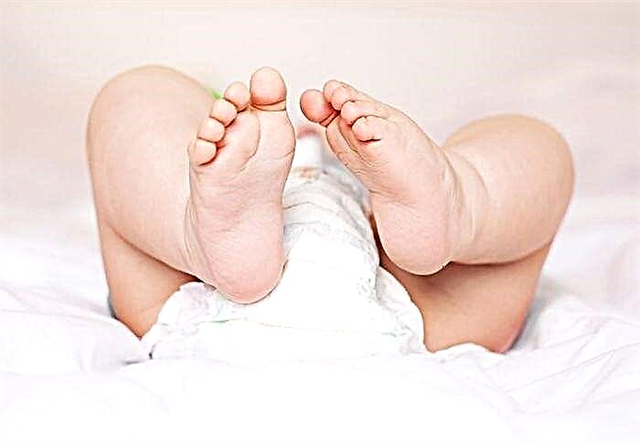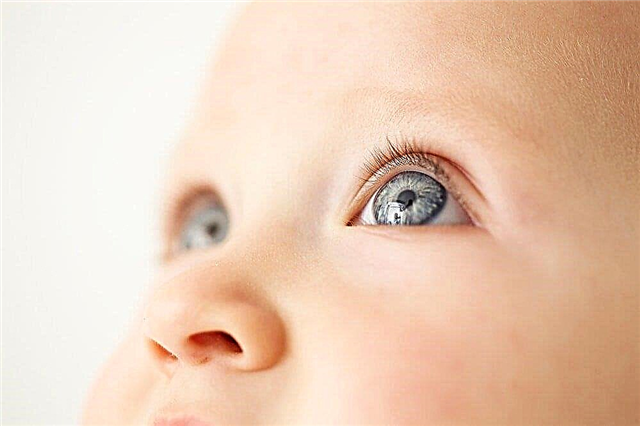The World Health Organization has developed norms for the weight of children under one year of age and older. They help young parents to navigate, whether everything is in order with the child, whether there are any deviations in his growth and development.

Baby
What affects the weight of the child
Many factors affect a child's weight. Therefore, you should not blindly believe the average norms, trying to adjust your own child to them. Indeed, even at birth, children differ not only in appearance, but also in size. They grow in proportion, the weight increases faster in those babies who are more likely to stretch in height. Of greater importance is the ratio of these indicators, which is called the body mass index. The main thing is that he should be normal, even if weight and height deviate from the generally accepted schedule.
Infant weight can be influenced by:
- Constitutional features;
- Nutritional features: the baby is breastfed or feeds on adapted formulas. In the first case, the mass usually grows noticeably faster;
- Timeliness of the introduction of complementary foods, this applies to both its premature start and too late acquaintance with adult food. Breastfed babies are offered new foods after 6 months. At the same time, they start with vegetables and then add dairy-free porridges. In children of “artificial”, complementary foods begin 1.5-2 months earlier. On the recommendation of a doctor, the timing can be changed, as well as the scheme for introducing products. So, if a baby eating a mixture does not gain weight well, it is advised to acquaint him first of all with cereals;
- The health status of the infant. Not only congenital abnormalities affect, but also how the pregnancy and childbirth went, the transferred viral diseases. So, when a child is unwell, he refuses to eat, respectively, his weight grows slowly. But this does not mean that this condition is considered normal throughout the year. For example, during the period of illness, the baby gained almost nothing, but he ate well after recovery and received almost a double increase. When a baby is feeling bad, you shouldn't force-feed him. The main thing is to offer food and not forget about the drinking regimen;
- Lack of mother's milk. If the child does not eat enough on gv, then his weight grows slowly. Then the baby becomes moody, requires breast more often, after feeding it does not calm down, but continues to cry. In such cases, it is recommended to establish lactation. Mainly, this will help a healthy diet, excluding diets, adequate sleep, drinking regimen and frequent latching on to the breast. If it is not possible to increase the volume of milk, it is recommended to feed the babies with adapted formulas. For example, use them instead of one of the feedings;
- Lactase deficiency. The baby, due to a lack of an enzyme, cannot assimilate mother's milk. Lactase is needed to break down lactose, or sugar. Only in this form is it quickly absorbed and easily absorbed. With lactase deficiency, the child has a loose stool that is quickly absorbed into the diaper. Chunks of undigested milk are noticeable in it, and there is a sour smell. Deficiency of the enzyme can be congenital or develop against the background of dysbiosis, allergies to certain foods;
- Dysbacteriosis. The number of beneficial bacteria that colonize the intestines is in the minority compared to opportunistic microflora. Because of this, the degree of absorption of foods deteriorates, digestion is disturbed, which leads to poor weight gain. In this case, there are also problems with the stool;
- Vitamin D deficiency.
Why monitor your baby's weight
Controlling the baby's weight will allow you to identify developmental deviations in time. There is no need to force the baby to eat or, conversely, deprive him of food in order to bring the parameters in line with the norms.
Note! The well-being of the child, his mood is much more important. If the baby is active, cheerful, eats with appetite, does not have problems with stool and other alarming symptoms, then you should not worry.

Active and healthy baby
It is important that in the first two weeks of life, the baby has added 200-250 grams of its minimum weight. Weight loss usually occurs on the second day after birth. It makes up about 5-8 percent of the total weight. This is a natural process, there is no need to be afraid. It is from this value that you need to build on when weighing a child. As a result, the baby gains at least 500 grams per month.
Usually, breastfed babies grow faster, their weight can even grow by 1.5-2 kilograms in 30 days. Then the weight of the monthly crumbs will already exceed 5.5-6 kg. Such changes occur in the first trimester after childbirth, then the set gradually decreases.
Note! A noticeable decrease in increases is observed with an increase in the child's activity. So, at six months, half of the kids are already sitting, some are crawling. They move more, so weight gain is slower.
How to weigh your baby at home
To find out how much a child weighs, it is not necessary to visit a clinic. It is sufficient to use a normal scale. It will take an adult and two dimensions. First you need to find out the exact weight of mom or dad, then - the same figure, but with the baby in your arms. Modern electronic devices are quite accurate, they show the value up to grams. Subtract the first from the last number. It is more convenient to measure with a baby scale.

Baby on the scales
In clinics, measurements are carried out in clothes, approximately taking away its weight. At home, you can get more accurate values by undressing your baby. It is best to weigh before meals, ideally in the morning, before the first meal. If there is a goal to compare indicators daily, then it is necessary to carry out the procedure at the same time. A diaper is placed on the bowl, only then the device is turned on. It is necessary to make sure that all previous measurements on the scoreboard are zeroed and the diaper is not taken into account. Next, it remains to put the baby and distract him a little so that he does not move. Then the device will quickly show the weight of the baby.
Council. If the baby is weighed in a diaper or clothes, then it is better to then weigh them separately and subtract from the obtained value.
Weight of boys up to a year
Table by months how much a child should weigh in accordance with the standards developed by WHO
| Age, months | Weight less than normal, kg | Low weight, kg | Weight within normal limits (lower limit), kg | Norm, kg | Weight within normal limits (upper limit), kg | High weight, kg | Weight above normal, kg |
|---|---|---|---|---|---|---|---|
| Newborn | 2,0-2,5 | 2,5-2,8 | 2,9 | 3,3 | 3,9 | 3,9-4,3 | 4,4-5,0 |
| 1 | 2,9-3,4 | 3,4-3,9 | 3,8 | 4,5 | 5,1 | 5,1-5,8 | 5,8-6,6 |
| 2 | 3,8-4,2 | 4,3-4,9 | 4,9 | 5,6 | 6,3 | 6,3-7,1 | 7,1-8,0 |
| 3 | 4,3-5,0 | 5,0-5,7 | 5,7 | 6,4 | 7,2 | 7,2-8,0 | 8,0-8,9 |
| 4 | 4,9-5,7 | 5,6-6,3 | 6,3 | 7 | 7,8 | 7,8-8,7 | 8,8-9,8 |
| 5 | 5,3-7,0 | 6,0-6,7 | 6,7 | 7,5 | 8,4 | 8,4-9,4 | 9,4-10,4 |
| 6 | 5,7-6,3 | 6,3-7,2 | 7,1 | 7,9 | 8,9 | 8,9-9,9 | 9,9-11,0 |
| 7 | 6,0-6,5 | 6,6-7,4 | 7,3 | 8,3 | 9,3 | 9,3-10,3 | 10,3-11,4 |
| 8 | 6,2-6,9 | 6,9-7,7 | 7,7 | 8,6 | 9,6 | 9,6-10,7 | 10,7-11,9 |
| 9 | 6,4-7,1 | 7,1-8,0 | 8 | 8,9 | 9,9 | 9,9-11,1 | 11,0-12,3 |
| 10 | 6,6-7,4 | 7,3-8,2 | 8,2 | 9,2 | 10,2 | 10,2-11,3 | 11,4-12,7 |
| 11 | 6,8-7,5 | 7,5-8,4 | 8,4 | 9,4 | 10,5 | 10,5-11,6 | 11,7-13,0 |
| 12 | 6,9-7,7 | 7,8-8,8 | 8,7 | 9,7 | 10,8 | 10,8-12,0 | 12,0-13,2 |
Based on the table, for example, you can find out at what age a child can weigh 9 kg. So this is considered an indicator of the norm at 7 months, and at 9, and even for a one-year-old baby. Do not expect that a child will rapidly gain weight if his parents cannot be called large.

Kid with parents
Note! Much is determined by genetics. How much a boy weighs in a year should depend on his height. If it is below average, then it is good when the mass is also in this column of the WHO table.
Weight of girls under one year
Girls under one year old usually grow more slowly than boys.
Table of how much a child weighs normally by months
| Age, months | Weight less than normal, kg | Low weight, kg | Weight within normal limits (lower limit), kg | Norm, kg | Weight within normal limits (upper limit), kg | High weight, kg | Weight above normal, kg |
|---|---|---|---|---|---|---|---|
| Newborn | 2,0-2,4 | 2,4-2,8 | 2,8 | 3,2 | 3,7 | 3,7-4,2 | 4,2-4,8 |
| 1 | 2,7-3,1 | 3,2-3,6 | 3,6 | 4,2 | 4,8 | 4,8-5,5 | 5,5-6,2 |
| 2 | 3,5-3,9 | 3,9-4,5 | 4,5 | 5,1 | 5,8 | 5,8-6,5 | 6,6-7,5 |
| 3 | 4,0-4,4 | 4,5-5,2 | 5,2 | 5,9 | 6,5 | 6,6-7,5 | 7,5-8,5 |
| 4 | 5,0-5,7 | 5,0-5,7 | 5,7 | 6,4 | 7,3 | 7,3-8,2 | 8,2-9,3 |
| 5 | 4,8-5,4 | 5,4-6,1 | 6,1 | 6,9 | 7,8 | 7,8-8,8 | 8,8-10,0 |
| 6 | 5,1-5,7 | 5,7-6,5 | 6,5 | 7,3 | 8,3 | 8,3-9,4 | 9,4-10,6 |
| 7 | 5,3-6,0 | 6,0-6,8 | 6,8 | 7,6 | 8,6 | 8,6-9,8 | 9,8-11,1 |
| 8 | 5,6-6,2 | 6,2-7,0 | 7,0 | 8,0 | 9,0 | 9,0-10,2 | 10,2-11,6 |
| 9 | 5,8-6,5 | 6,5-7,3 | 7,3 | 8,2 | 9,3 | 9,3-10,6 | 10,6-12,0 |
| 10 | 5,9-6,7 | 6,8-7,5 | 7,5 | 8,5 | 9,6 | 9,6-10,9 | 10,9-12,4 |
| 11 | 6,1-6,9 | 6,9-7,7 | 7,7 | 8,7 | 9,9 | 9,9-11,2 | 11,2-12,8 |
| 12 | 6,3-7,0 | 7,0-7,9 | 7,9 | 9,0 | 10,1 | 10,1-11,5 | 11,5-13,1 |
There are calculators that allow you to calculate the body mass index, which will independently determine by the age of the baby, whether it is normal or not. To determine at what age a child weighs 13 kg, you need to look at the columns with mass indicators. So, for girls, this value is higher than normal, even when they are 12 months old. Moreover, if the growth is in the range from 79.2-81.7 centimeters, then there is no reason for unrest. The body mass index defines the parameters of the child as acceptable. How much a girl should weigh per year according to the norms depends on her height.
Permissible deviations in weight
The weight of the children is different. It cannot be that babies of the same age have the same body weight. The same goes for their height. Both indicators are considered together, which allows you to determine whether there is a developmental disability or there is no cause for concern. Average indicators of the norm and deviations from it are collected in the WHO table. The data is different for girls and boys. You need to focus on the monthly increase, paying attention to the child's well-being.
Note! The main thing is that the baby's weight should increase by 125 grams per week. It is not recommended to weigh it daily, so as not to injure the baby and mother once again.
What to do with weight problems
Weight problems are usually diagnosed by a pediatrician at checkups, which are scheduled monthly for children under one year old. The doctor must take into account the nutrition of the child, its parameters at birth. He also necessarily examines the child in order to assess his state of health and determine if there are deviations.

Kid at the doctor's appointment
After collecting all the data, we can conclude whether the child is overweight or underweight, which requires adjustment.
Excess
It is necessary to reduce the pathological overweight of the baby in order to avoid problems with the cardiovascular system in the future, to reduce the risk of developing diabetes. So the following measures are taken:
- Correct the nutrition of the baby and mother, if the child is on guards. For formula-fed babies, they monitor the correct preparation of the mixture;
- Increase the daytime activity of the baby, the duration of walks in the fresh air;
- Massage is prescribed and gymnastics is recommended.
Disadvantage
Lack of weight occurs both among "artificial" people and babies who eat mother's milk. The main thing is to exclude the presence of pathology for which drug treatment is required. With a lack of weight, early introduction of complementary foods is recommended, as well as starting the introduction of products with cereals. You need to pay attention to the mother's nutrition if she is breastfeeding. So, the predominance of foods that are high in sugar reduces the nutritional value of milk.
You need to start worrying if the child is lethargic, capricious, cries immediately after eating, does not sleep well. In this case, you need to consult a pediatrician and, if necessary, take action.
How to avoid deviations from the norms
Pathological underweight is usually seen immediately when the baby does not have enough subcutaneous fat. Obesity is rarely diagnosed in children under one year old. It is assumed that up to two years old babies are plump, with folds on the arms and legs. It must be remembered that the best food for a baby up to six months is breast milk. Apart from him, the baby does not need anything. Foods that are introduced into the diet after 6 months are needed to introduce the infant to new food, tastes and texture. This is a supplement to the main food that the baby should eat with interest and pleasure.
Note! Timely introduction of complementary foods and breastfeeding will help prevent obesity. Well-established lactation and proper attachment to the breast will prevent hypotrophy from developing.

Breast-feeding
There are tables that allow you to assess whether a baby's weight is normal under one year old. They contain averages and values that will help determine deviations up and down. If you suspect that the child is developing incorrectly, you need to see a doctor. He will determine whether the disease is the cause, and, if necessary, prescribe treatment or adjust the nutrition of the baby and mother.



